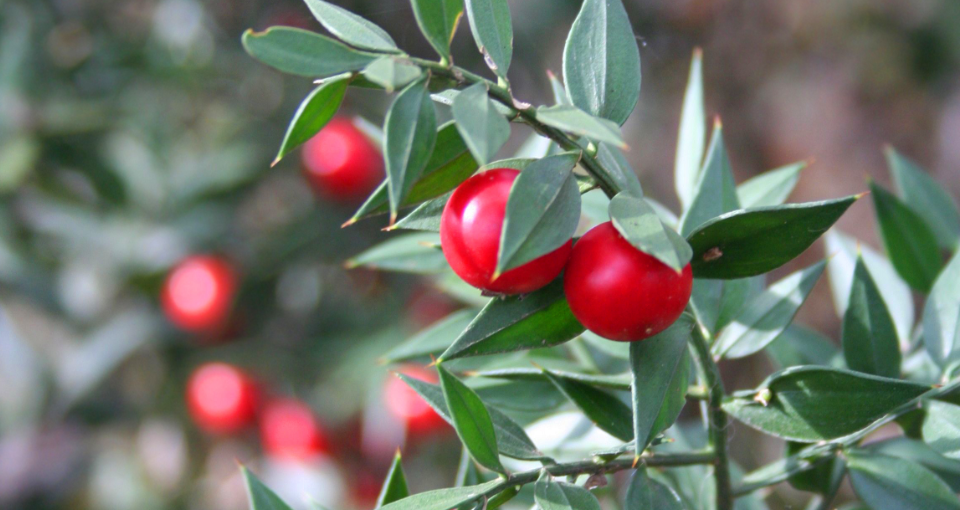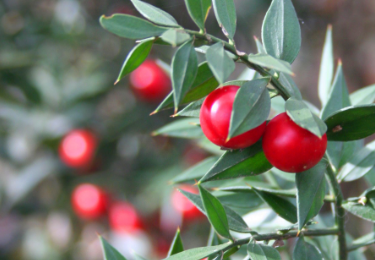
Watchlist
You can print out your watchlist and use it as a reminder for your purchase in the pharmacy.
Your watchlist currently contains no products.
Print


Butcher's broom
Butcher's broom
Botanik
The butcher's broom (Ruscus aculeatus) is an evergreen shrub, which reaches a height of approx. 1 m. It is the prime example of a plant with phyllocladias. What looks like ordinary leaves are actually side shoots. They are broad-lanceolate, leathery stiff and have a sharp tip. The actual leaves are only about 10 mm long, 2 mm wide and fall off early. During the flowering period from March to May the flowers appear greenish-white with a diameter of approx. 5 mm. The fruits are bright red berries which, like the flowers, stand individually on the phyllocladias.
mehr
Geschichte
The butcher's broom probably owes its name to the use of its stiff, bundled branches as brooms. Butchers cleaned their butchering blocks with them.. Butcher's broom has been on the menu since ancient times. Until modern times, in parts of Europe and the Middle East, the young underground shoots were consumed as vegetables, like asparagus. Due to their diuretic effect, they have since been used as a medicinal plant for kidney pain, bladder stones and jaundice [1].
mehr
Inhaltsstoffe
Saponins (especially ruscogenin and neoruscogenin), flavonoids (including rutin, vitexin), anthraquinones, benzofurans, coumarin derivatives (aesculin), essential oils (mainly monoterpenes), sterols
mehr
Eigenschaften
In chronic venous insufficiency, the return of blood from the legs to the heart is disturbed. This causes typical symptoms such as pain, heaviness, tingling, swelling, itching and haemorrhoids. Butcher's broom prevents and reduces these complaints. [2, 3]
Ruscus aculeatus showed an increase in venous tonus in animal experiments and capillary-sealing, antiphlogistic and diuretic effects were also described. [3]
The contained steroid saponins (especially Ruscogenine) have edema-inhibiting effects. One of the mechanisms of action is based on the inhibition of elastase and hyaluronidase which leads to a reduced membrane permeability of the veins. [4]
1. Uffenbach P (Hrsg.): Pedacii Dioscoridis Anazarbaei Kraeuterbuch ... (ins Deutsche übersetzt von Johannes Danzius), Frankfurt am Main (bei Johann Bringern) 1610, S. 324
2. Kommission E: 05032 Rusci aculeati rhizoma / Maeusedornwurzelstock: BAnz. Nr.127 vom 12.07.1991
3. European Scientific Cooperative on Phytotherapy (2017) E/S/C/O/P Monographs: The Scientific Foundation for Herbal Medicinal Products: Rusci rhizoma - Butcher's Broom
4. Facino RM, Carini M, Stefani R et al. (1995) Anti-elastase and anti-hyaluronidase activities of saponins and sapogenins from Hedera helix, Aesculus hippocastanum, and Ruscus aculeatus: factors contributing to their efficacy in the treatment of venous insufficiency. Arch Pharm (Weinheim) 328(10): 720–724
mehr
Produkte mit Butcher's broom
Veneo 093® Bio Tabletten
Veneo 093® bio Tablets
